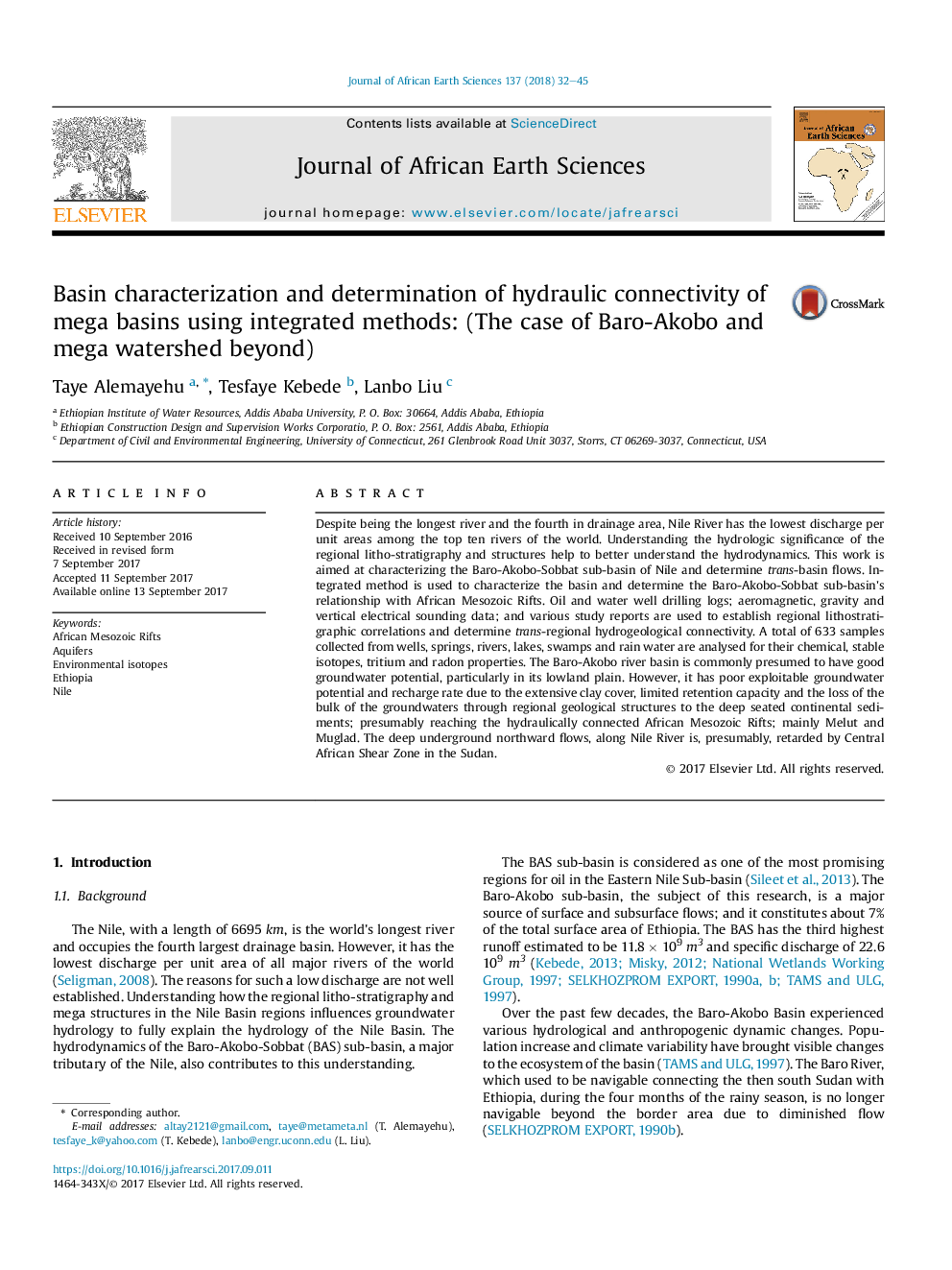| کد مقاله | کد نشریه | سال انتشار | مقاله انگلیسی | نسخه تمام متن |
|---|---|---|---|---|
| 5785448 | 1640171 | 2018 | 14 صفحه PDF | دانلود رایگان |

- Findings of this research give clues on:
- Hydrological significance of lithostratigraphical and structural setups of Baro-Akobo in modifying the Nile River system.
- Hydraulic connectivity of African Mesozoic Rifts and the limited holding capacity of aquifers of West Ethiopian Plateau.
- Why the Nile River has the lowest discharge per unit areas among the top ten major rivers of the world.
- The sensitivity of the hydro-ecosystem of Baro-Akobo-Sobbat sub-basin to little climate and anthropogenic shocks.
Despite being the longest river and the fourth in drainage area, Nile River has the lowest discharge per unit areas among the top ten rivers of the world. Understanding the hydrologic significance of the regional litho-stratigraphy and structures help to better understand the hydrodynamics. This work is aimed at characterizing the Baro-Akobo-Sobbat sub-basin of Nile and determine trans-basin flows. Integrated method is used to characterize the basin and determine the Baro-Akobo-Sobbat sub-basin's relationship with African Mesozoic Rifts. Oil and water well drilling logs; aeromagnetic, gravity and vertical electrical sounding data; and various study reports are used to establish regional lithostratigraphic correlations and determine trans-regional hydrogeological connectivity. A total of 633 samples collected from wells, springs, rivers, lakes, swamps and rain water are analysed for their chemical, stable isotopes, tritium and radon properties. The Baro-Akobo river basin is commonly presumed to have good groundwater potential, particularly in its lowland plain. However, it has poor exploitable groundwater potential and recharge rate due to the extensive clay cover, limited retention capacity and the loss of the bulk of the groundwaters through regional geological structures to the deep seated continental sediments; presumably reaching the hydraulically connected African Mesozoic Rifts; mainly Melut and Muglad. The deep underground northward flows, along Nile River is, presumably, retarded by Central African Shear Zone in the Sudan.
Journal: Journal of African Earth Sciences - Volume 137, January 2018, Pages 32-45